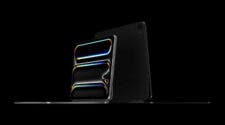On Tuesday, Apple unveiled its latest generation of iPads at its “Let Loose” event. Showcasing upgrades to both the iPad Air and iPad Pro alongside a range of new accessories. While the company introduced several exciting advancements and features, one notable omission caught the attention of many tech enthusiasts: the absence of the Always-on Display (AOD) feature on the M4 iPad Pro, despite its groundbreaking OLED screen.
The inclusion of an OLED display in the iPad Pro marks a significant milestone for Apple. Previously, iPads relied on LCD or mini-LED technology. A stark contrast to the OLED panels found in iPhones and Apple Watches for years. This transition promises superior image quality with deeper blacks, higher contrast ratios, and potentially improved battery efficiency. However, the excitement surrounding the OLED display was tempered by the lack of an AOD function. A feature many users anticipated with the technology switch.
The New iPad Pro: A Glimpse of Innovation, But Missing a Familiar Feature

The AOD functionality has become a staple in Samsung’s Galaxy Tab line for quite some time. It allows users to view essential information like time, date, notifications, and even customized widgets on a low-power display. Eliminating the need to constantly wake the device. Given Apple’s integration of AOD into iPhones and the widespread adoption of OLED technology in the iPad Pro, its absence appears to be a missed opportunity.
Gizchina News of the week
Pre-launch leaks fueled speculation that the iPad Pro would boast both an OLED display and an AOD feature. While one of these predictions materialized, the exclusion of AOD is likely a strategic decision by Apple. Leaks suggesting a drastic reduction in refresh rate for the AOD functionality might not have aligned with Apple’s vision for the iPad Pro’s performance.
The iPhone 14 Pro, for instance, utilizes an LTPO (Low-Temperature Polycrystalline Oxide) panel that allows for a minimum refresh rate of 1Hz, enabling the AOD function with minimal power consumption. The new iPad Pro, however, employs a variable refresh rate fixed between 10Hz and 120Hz. Potentially hindering the implementation of a power-efficient AOD experience.
While the decision to forgo the AOD feature for this iteration of the iPad Pro may raise questions, it doesn’t necessarily preclude its inclusion in future models. Apple’s focus on optimizing battery life and performance could explain the current omission. However, with the AOD gaining traction as a user-friendly feature, its eventual arrival on the iPad Pro wouldn’t be surprising, especially if Apple can develop a solution that balances functionality with power efficiency.





